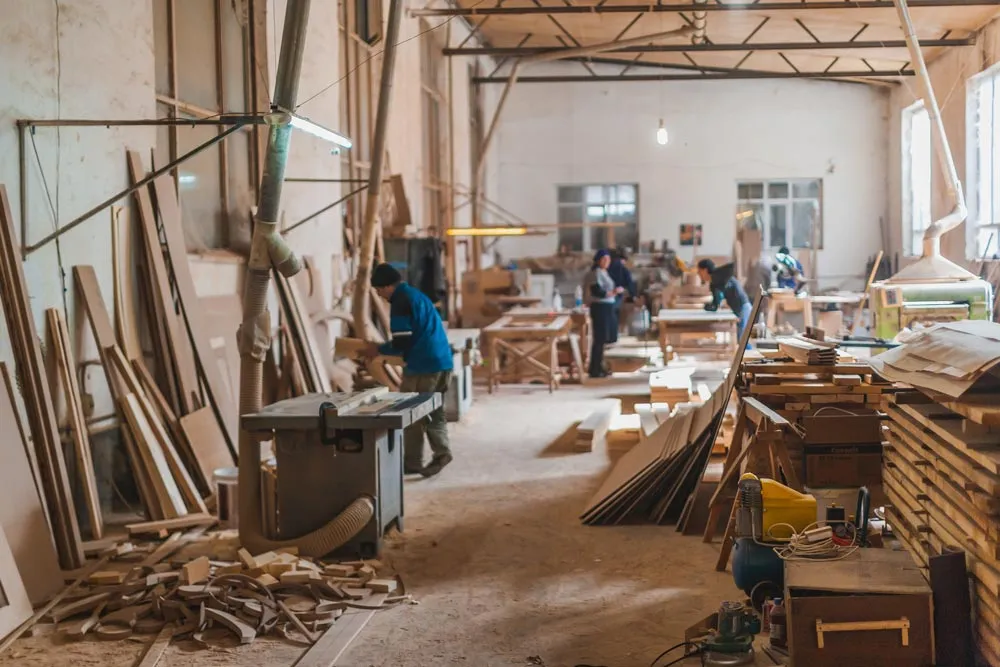- June 22, 2017
- No Comment
Expert Advice on Getting Wood in the Wild

The life of a woodworker is full of triumphs and frustrations. For those dedicated to the craft, the joys are worth the struggle because the struggles are really just part of the joy. There’s no greater example of this than the experience of hunting your own wood in the wild.
When you get to see the timber you use in its natural state and landscape, you gain an understanding of its history, how it grew, what influenced it, and what it looks like before being dissected into slabs. And, when you’ve looked snakes, spiders and scorpions in the face (as they’re falling into yours from the toppling tree), you certainly have an appreciation for the entirety of the process involved.
Master woodworker, Steve Hay, reckons every aspiring woodworker should aim to get out and harvest their own wood.
“You’re much more appreciative of the timber if you nearly had a heart attack getting it into the first place.”
Wood hunting rule #1: Be prepared, be responsible
While it is definitely a worthy mission for your bucket list, wood hunting has to be done responsibly. You need a crew of fellow wood enthusiasts who know what they’re doing. This is vital to ensure everyone’s safety and protect the native flora and fauna you’ll be interacting with.
You never know what you’re going to encounter in the bush so it’s vital to be prepared with everything from safety gear and first aid kits to warm clothes and, the essential Aussie survival tool: a cracking sense of humour.
“I’ve never seen so many scorpions in all my life. Even when we went back to camp, we got the campfire going, put the billy on, grabbed some of the Bowyakka branches and threw ’em in the fire and scorpions were still walking out of the flames. That was good stuff.”
Wood hunting rule #2: Get your mates involved
Steve is lucky enough to have a crew who all use wood for different aspects of their work, meaning when they take down a tree, every piece gets used. The band of tool makers, wood turners and furniture makers are yet to embark on their 2017 trip. However, Steve was more than happy to reminisce on last year’s expedition. Their quarry for the weekend was Bowyakka (aka Acacia microsperma); a lovely timber with a beautiful colour and, as Steve says,
“not something you’ll find in your local hardware shop.”

You will, in fact, find few pictures of it online and none that really do it justice. However, it is a unique and stunning timber type with an abundance of character in its grain.
Wood hunting rule #3: Bring the right machinery
If you’re taking down a tree, you’re going to need a quality chainsaw. It’s also worth checking out arborist equipment for harnesses, pulleys, ropes and safety gear which you may need depending on the type of tree you decide to tackle.
Once the tree is down, the chainsaw will come in handy again for cutting its bulk down to usable and transportable portions. This is one of those occasions where you want to think before you cut and make sure everyone agrees on portion sizes for their specific needs.
“We cut the sections out, then seal the ends wrap it up in glad wrap and transport it home where we band-saw them to whatever size we need. Then they get air dried and stuck out for eight months to a year before we use it.”
Wood hunting rule #4: Use every part of the tree
A wood hunting mission should be approached the way the Inuits and Eskimos hunted whales: with respect for the huntee and every single part of it put to use.
With their Bowyakka, Steve and his crew used the smaller stuff (and scorpions) for firewood and then the larger parts were divvied up according to the needs of the woodworkers. Smaller pieces for the wood turners and tool makers, larger pieces for the furniture makers.
“Very little ever gets wasted. And then if there is any left, we stack it up by the side of the roadway, so the bloke whose property we’re on gets firewood for winter.”
After their bounty was successfully shared out, each member of the party took their portions home and got to work at their own pace. By the time Steve determined what he wanted to do with his Bowyakka bounty, his friend (and expert plane maker) Terry Gordon, had already made a plane from the timber and given it to Steve. It was this very plane that Steve used to shape his pieces of Bowyakka.
“It was surreal because I was using a plane to plane the timber from the same tree the plane was made out of.”






